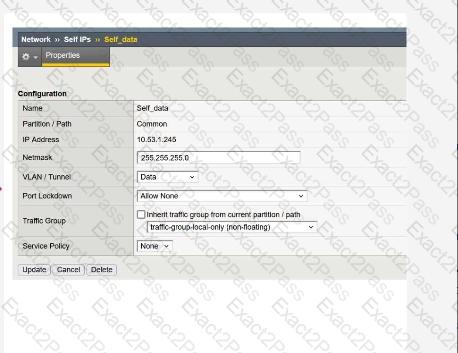Last Update 2 hours ago Total Questions : 42
The BIG-IP Administration Install, Initial Configuration, and Upgrade content is now fully updated, with all current exam questions added 2 hours ago. Deciding to include F5CAB1 practice exam questions in your study plan goes far beyond basic test preparation.
You'll find that our F5CAB1 exam questions frequently feature detailed scenarios and practical problem-solving exercises that directly mirror industry challenges. Engaging with these F5CAB1 sample sets allows you to effectively manage your time and pace yourself, giving you the ability to finish any BIG-IP Administration Install, Initial Configuration, and Upgrade practice test comfortably within the allotted time.
The BIG-IP Administrator needs to update access to the Configuration Utility to include the172.28.31.0/24and172.28.65.0/24networks.
From the TMOS Shell (tmsh), which command should the BIG-IP Administrator use to complete this task?
When logged into thebash shellof a BIG-IP system, which of the following commands will display themanagement-ip address?
(Choose two.)
A BIG-IP Administrator is responsible for deploying a new software image on an F5 BIG-IP HA pair and has scheduled a one-hour maintenance window.
With a focus on minimizing service disruption, which of the following strategies is the most appropriate?
A BIG-IP Administrator needs to purchase new licenses for a BIG-IP appliance.
The administrator needs to know:
Whether a module is licensed
The memory requirement for that module
Where should the administrator view this information in theSystem menu?
How can the BIG-IP Administrator tell when anunlicensed modulehas been provisioned?
The monitoring team reports that the SNMP server is unable to poll data from a BIG-IP device.

What information will help the BIG-IP Administrator determine whether the issue originates from the BIG-IP system?
What are the two options for securing a BIG-IP’s management interface?
(Choose two.)

